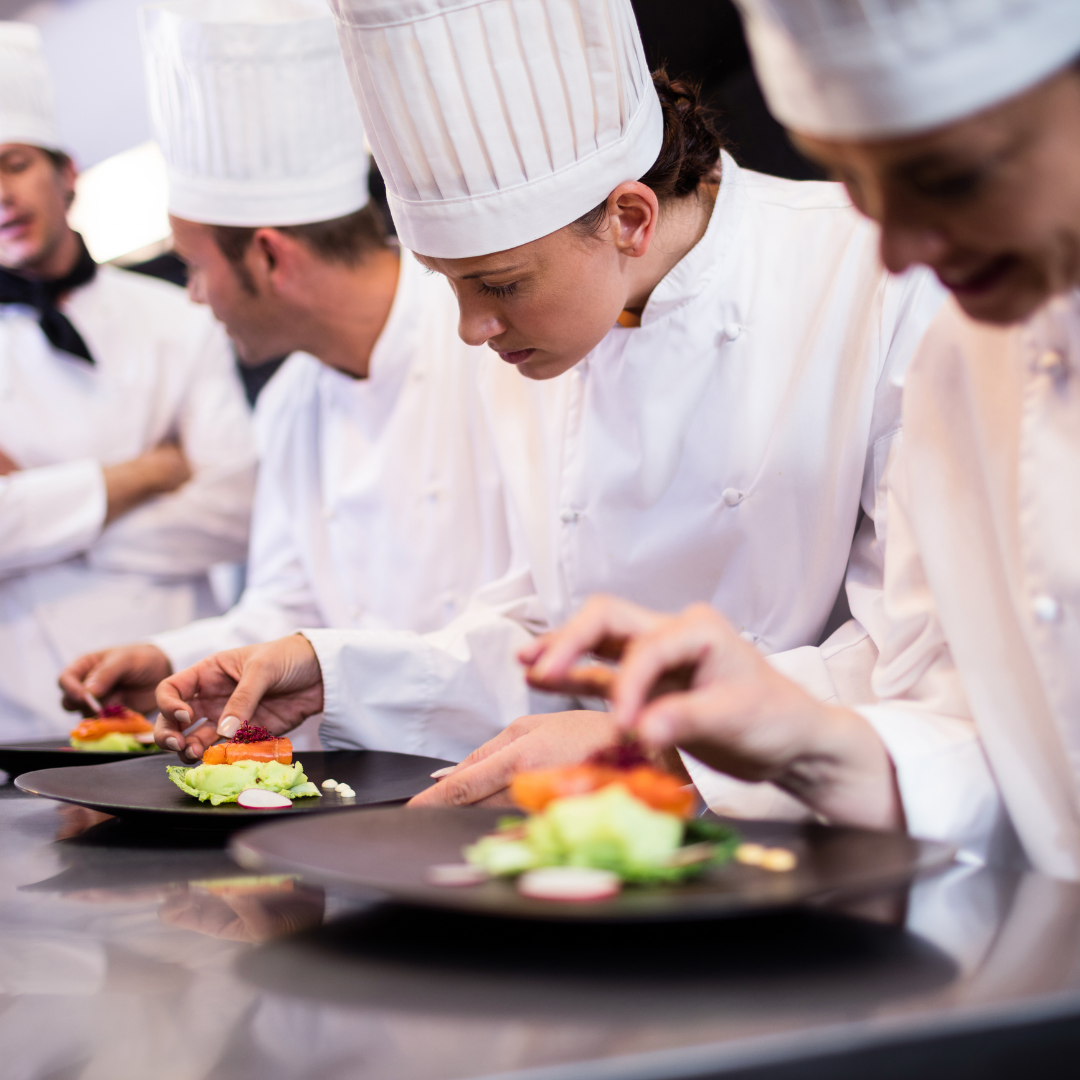In the world of HORECA kitchens, there exists a diverse ecosystem of culinary professionals. Each of them has their own specialized roles and responsibilities. Understanding the hierarchy and functions of various chef positions is crucial for the seamless operation of any culinary establishment. In this comprehensive guide, we delve into the intricacies of different types of chefs, their duties, and how they contribute to the culinary landscape.
Let’s first understand the difference between cooks and chefs!
Chef vs Cook: While both chefs and cooks play important roles in the kitchen, there are distinct differences in their responsibilities and scope of work. Chefs typically hold managerial positions and oversee operations, while cooks focus on executing culinary tasks under the guidance of chefs.
Managerial Chefs
At the helm of every successful kitchen there are the managerial chefs, who shoulder the responsibility of overseeing operations and ensuring the restaurant’s overall success. Let’s explore the key roles within this category:
1. Chef-Owner:
- Primary Task: menu engineering and business management
- Number Per Kitchen: Typically one per establishment.
- Other Duties: Mainly, running the entire establishment and engineering the menu’s vision, preparing budgets
2. Executive Chef (Chef de Cuisine, Head Chef):
An Executive Chef oversees all the aspects of the kitchen he manages.
- Primary Task: Kitchen management and daily operations oversight.
- Number Per Kitchen: One per kitchen.
- Other Duties: Supervising food preparation, help with menu planning and recipe creation,
3. Sous Chef (Second Chef, Under Chef):
A sous chef is a secondary chef that in case of the absence of executive Chef will take upon the management duties of the kitchen
- Primary Task: Team management and kitchen coordination.
- Number Per Kitchen: Variable based on kitchen size.
- Other Duties: Training new staff and ensuring dish consistency.
4. Senior Chef (Chef de Partie, Station Chef):
The Senior Chefs usually focus on what they truly excel. They will most probably be assigned to one specific dish on the menu.
- Primary Task: Managing a specific station and ensuring quality.
- Number Per Kitchen: Multiple, depending on the size of business and number of possible tasks.
- Other Duties: Specializing in a particular area of the menu and ensuring high quality level of the results their station delivers.
Specialized Chefs
Beyond the managerial roles, specialized chefs bring expertise in specific culinary domains. They bring their craftsmanship on the table to elevate the dining experience.
Let’s explore some of these specialized roles:
1. Pastry Chef (Patissier):
- Primary Task: Crafting pastries, bread, and desserts.
- Number Per Kitchen: Varies based on dessert offerings.
- Other Duties: Curating the dessert menu and ensuring quality and presentation.
2. Sauce Chef (Saucier, Saute Chef):
- Primary Task: Preparing sauces and gravies for various dishes.
- Number Per Kitchen: Typically one per kitchen.
- Other Duties: Crafting soups and contributing to flavor profiles.
3. Fish Chef (Poissonier):
- Primary Task: Handling seafood procurement and preparation.
- Number Per Kitchen: Usually one per kitchen.
- Other Duties: Ensuring sustainability and freshness of seafood offerings.
4. Vegetable Chef (Entremetier):
- Primary Task: Cooking and preparing vegetables and starches.
- Number Per Kitchen: At least two per kitchen.
- Other Duties: Overseeing soup and egg dishes.
5. Meat Chef (Rotisseur, Roast Chef):
- Primary Task: Preparing and cooking various meats.
- Number Per Kitchen: Typically one per kitchen.
- Other Duties: Sourcing quality meats and ensuring proper cooking techniques.
6. Pantry Chef (Garde Manger):
- Primary Task: Creating cold food items and buffet presentations.
- Number Per Kitchen: 1-2, depending on restaurant size.
- Other Duties: Setting up visually appealing displays and maintaining food safety standards.
7. Fry Chef (Friturier):
- Primary Task: Perfectly frying a variety of foods.
- Number Per Kitchen: Varies based on menu focus.
- Other Duties: Ensuring fryer cleanliness and coordination with other chefs.
8. Grill Chef (Grillardin):
- Primary Task: Grilling meats and vegetables to perfection.
- Number Per Kitchen: Typically one grill cook.
- Other Duties: Collaborating with other chefs on menu items.
9. Butcher Chef (Boucher):
- Primary Task: Preparing and supplying meat cuts to other stations.
- Number Per Kitchen: One butcher per kitchen.
- Other Duties: Collaborating with other chefs on meat selection and sourcing.
Types of Cooks
While chefs occupy leadership roles in the kitchen, cooks play a vital role in executing culinary creations and supporting the chef’s vision.
Let’s explore some common cook positions!
1. Line Cook (Commis):
- Primary Task: Assisting with cooking where needed completing other kitchen tasks.
- Number Per Kitchen: Varies based on kitchen size.
- Other Duties: Learning various cooking styles and techniques, or may be asked to fill in if needed with plating dishes, taking orders, or cutting vegetables.
2. Prep Cook (Kitchen Assistant, Kitchen Porter, Kitchen Hand):
Primary Task: Daily food prep basic activities and kitchen maintenance such as: chopping ingredients, finishing their prep lists, properly labeling containers in storage, and cleaning countertops
- Number Per Kitchen: Usually a team of prep cooks.
- Other Duties: Assisting with cooking tasks as needed.
3. Relief Cook (Chef de Tourant, Roundsman):
May offer assistance when the chefs are overwhelmed by tasks
- Primary Task: Providing support to overwhelmed chefs.
- Number Per Kitchen: Typically one relief cook.
- Other Duties: Maintaining cleanliness and organization.
4. Short Order Cook:
The main purpose of these cooks is to fulfil at high speed and quality as many order tickets as possible.
- Primary Task: Quickly preparing simple meals.
- Number Per Kitchen: Usually 1-2, depending on demand.
- Other Duties: Ensuring food quality and efficiency.
If you are a culinary professional, keen to actively work in a professional kitchen, by understanding the hierarchy and responsibilities of different chef positions, you can chart a path towards hospitality success. From managerial chefs steering the ship to specialized chefs crafting culinary masterpieces, each role contributes to the seamless functioning of the kitchen.
Do you want to be part of a professional team of chefs and cooks?
GP-Connect will connect you with the right hospitality employer in a matter of days!
Send your CV today and upscale your culinary journey today!
recruitment@gp-connect.com





